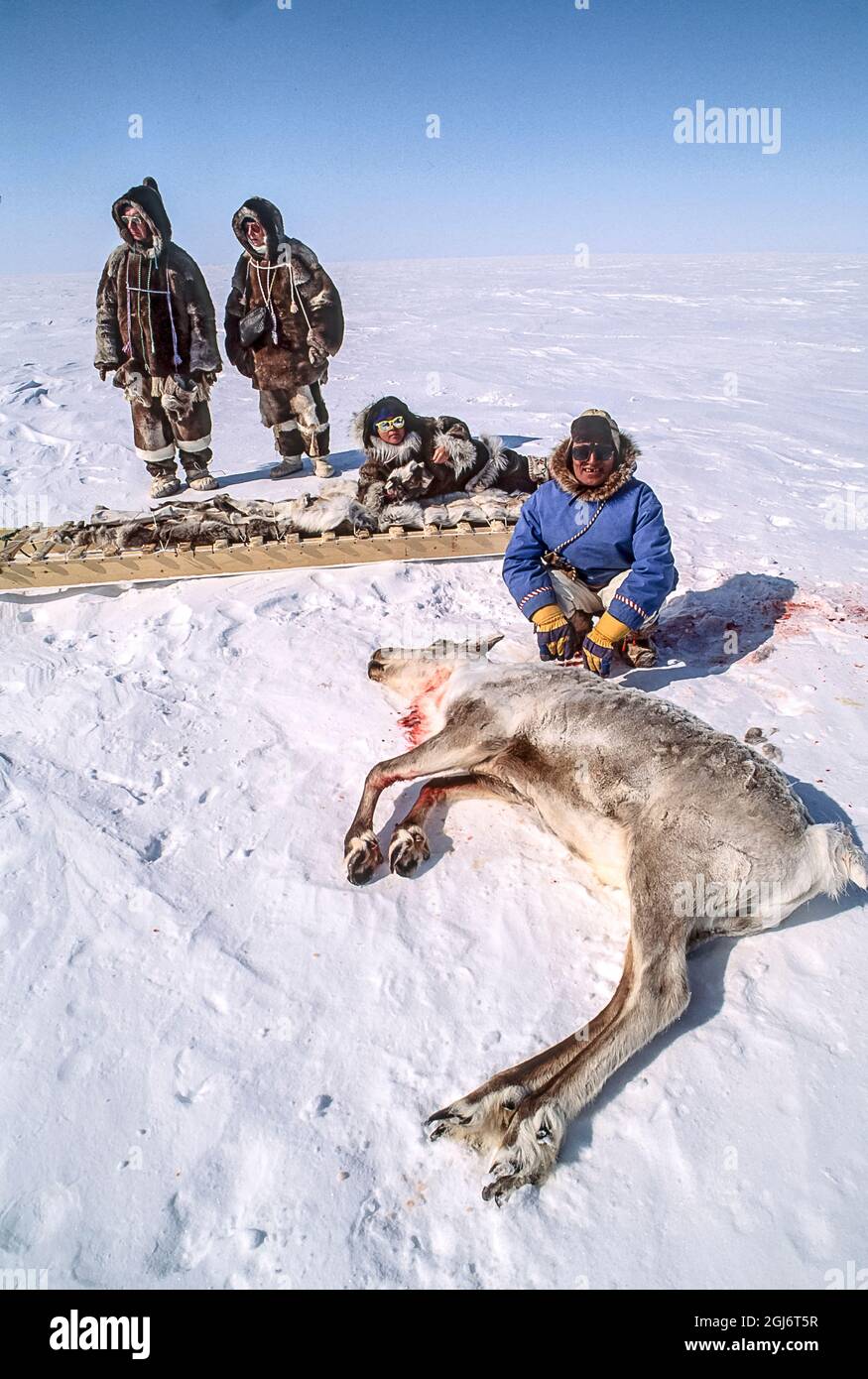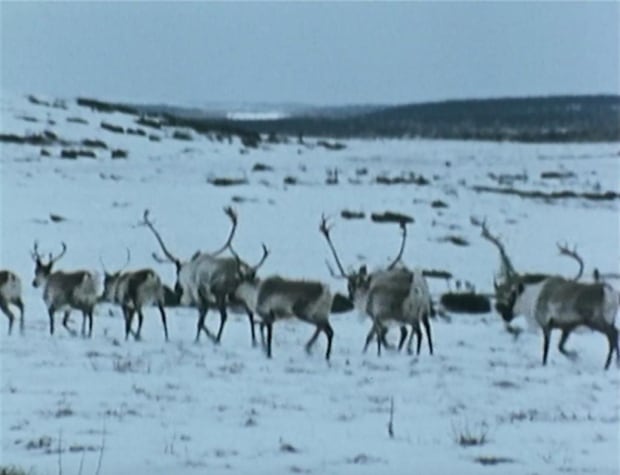
The Enduring Hunt: Caribou, Culture, and Survival for the Innu of Subarctic Canada
In the vast, ancient landscapes of Subarctic Canada, where the boreal forest gives way to tundra, an age-old drama unfolds with the changing seasons: the migration of the caribou. For the Innu people, indigenous inhabitants of Nitassinan (their ancestral lands spanning parts of Quebec and Labrador), this majestic deer, known as tuktu or caribou in Innu-aimun, is not merely an animal; it is the cornerstone of their existence, a spiritual guide, and the very essence of their cultural identity. The Innu caribou hunt is more than a subsistence activity; it is a profound practice steeped in tradition, reverence, and an intricate web of knowledge passed down through countless generations.
For thousands of years, the Innu have lived in an intimate relationship with the caribou herds, their lives inextricably linked to the animals’ cyclical movements. Their nomadic existence was dictated by the caribou’s migration routes, following the herds across vast territories. This deep connection forged a worldview where humanity and nature were inseparable, and respect for the natural world was paramount. As Elder Philippe Sioui, a respected Innu knowledge keeper, once articulated, "The caribou is our life, our soul. Without it, we are nothing. It gives us everything – food, clothing, shelter, and our very spirit." This sentiment encapsulates the profound spiritual and material dependency that defines the Innu-caribou relationship.
The traditional Innu hunt is a meticulous, highly skilled endeavor, demanding patience, profound understanding of the environment, and an unwavering respect for the prey. Hunters possess an encyclopedic knowledge of caribou behavior: their preferred foraging grounds, their reactions to weather patterns, and the subtle signs that betray their presence – a broken twig, a disturbed patch of lichen, the faint scent carried on the wind. Before the advent of modern tools, Innu hunters would track caribou on snowshoes (asham) or canoes, using bows and arrows, spears, or elaborate snares and corrals. The emphasis was always on efficiency and minimizing suffering, a testament to their ethical hunting philosophy.
Modern hunting practices have, inevitably, adapted. Snowmobiles and rifles have replaced snowshoes and bows for many, making the hunt less physically arduous and more efficient. However, the spirit of the hunt remains deeply traditional. It is still a communal effort, often involving multiple generations. Elders teach younger members the importance of sharing, the proper way to butcher the animal to maximize its utility, and the ceremonies of gratitude. A successful hunt is not just about bringing meat home; it is about reinforcing social bonds, transmitting invaluable knowledge, and perpetuating a way of life that defines them. The communal sharing of caribou meat, known as matshuan, is a sacred ritual, ensuring that no one in the community goes hungry and fostering a sense of collective responsibility.
The cultural significance of the caribou extends far beyond sustenance. Every part of the animal is utilized, embodying a philosophy of zero waste. The meat provides essential protein and fat, crucial for survival in the harsh subarctic climate. The hides are transformed into warm, durable clothing – parkas, mitts (mukushanis), and moccasins (makashan). Caribou sinews become strong thread for sewing, while bones and antlers are fashioned into tools, utensils, and spiritual objects. Even the brain is used to soften and tan the hides. This holistic approach underscores the Innu’s deep connection to their environment and their ingenuity in harnessing its resources sustainably.

Spiritually, the caribou is a powerful entity in Innu cosmology. It is often seen as a gift from the Manitu, the spirit world, and is treated with immense reverence. Before a hunt, prayers and offerings may be made, seeking permission and success. After a successful hunt, specific rituals are observed, such as placing the skull in a respectful location, ensuring the animal’s spirit is honored and will return. Stories and legends abound, depicting the caribou as a wise teacher, a provider, and sometimes, a trickster. These narratives are not mere entertainment; they are moral compasses, guiding principles for living in harmony with the natural world and understanding one’s place within it. The caribou is so central to Innu identity that they often refer to themselves as the "Caribou People," a name that speaks volumes about their historical and ongoing connection.
Despite the enduring strength of these traditions, the Innu caribou hunt faces unprecedented challenges in the 21st century. Climate change is altering migration patterns, affecting herd health, and making traditional tracking more difficult. Industrial development – mining, logging, and hydroelectric projects – encroaches on critical caribou habitat, disrupting calving grounds and ancestral hunting territories. These developments fragment landscapes, increase human presence, and stress already vulnerable herds.
The most pressing concern for many Innu communities is the alarming decline in caribou populations across much of their traditional territory. The George River caribou herd, for example, once numbering over 800,000 animals, has plummeted to a mere fraction of that size, raising grave concerns about its long-term viability. This decline has forced difficult decisions, with some Innu communities voluntarily reducing or even halting their hunts in solidarity with conservation efforts, even as they assert their inherent Aboriginal rights to hunt. This tension between traditional rights and the urgent need for conservation is a complex issue, often requiring co-management strategies where Innu knowledge and perspectives are integrated into scientific conservation plans.
The erosion of traditional knowledge is another significant challenge. As younger generations move to modern settlements and engage with contemporary education and employment, the direct, immersive experience of living on the land and participating in traditional hunts can diminish. Elders worry that the intricate skills, spiritual understanding, and Innu-aimun terminology associated with the caribou will fade, weakening the cultural fabric that has sustained their people for millennia. Efforts are underway within Innu communities to counteract this, through land-based programs, cultural camps, and intergenerational teaching initiatives designed to reconnect youth with their heritage.
In conclusion, the Innu caribou hunt is far more than a simple act of harvesting an animal; it is a living testament to a profound cultural heritage, a spiritual covenant, and a crucial component of their identity as the "Caribou People." It embodies an ethical framework of respect, reciprocity, and sustainability that holds valuable lessons for the modern world. As the Innu navigate the complexities of a rapidly changing environment and external pressures, their commitment to the caribou and their ancestral hunting practices remains an unwavering beacon of cultural resilience. Supporting their traditional ways is not just about preserving a unique culture; it is about recognizing an invaluable model of coexistence with nature, a model that, for thousands of years, has proven essential for survival in the heart of Subarctic Canada.
